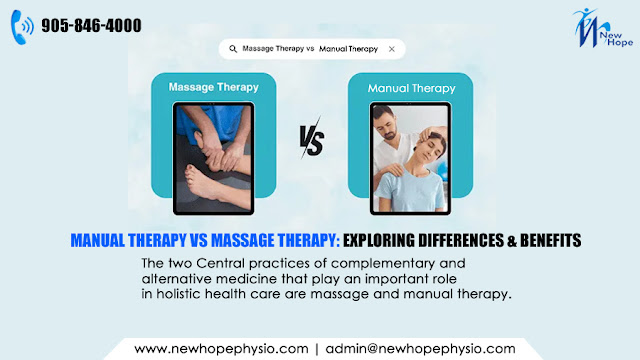In the realm of holistic healthcare, manual therapy and massage therapy stand out as two popular approaches aimed at improving physical well-being. While both modalities involve hands-on techniques, they serve distinct purposes and offer unique benefits. Understanding the differences between manual therapy and massage therapy can help individuals make informed decisions about which approach aligns best with their health goals.
Manual Therapy: Targeting Specific Issues
Manual therapy encompasses a range of techniques performed by trained professionals, such as physical therapists, chiropractors, or osteopaths. These techniques involve skilled manipulation and mobilization of joints, soft tissues, and muscles to address musculoskeletal issues, pain, and dysfunction.
The primary goal of manual therapy is to restore mobility, alleviate pain, and improve function in specific areas of the body. Therapists employ various hands-on techniques, including joint mobilization, manipulation, stretching, and muscle energy techniques, tailored to each individual's needs. Manual therapy often targets specific structural imbalances, postural issues, or injuries resulting from trauma or repetitive strain.
One of the key aspects of manual therapy is its focus on assessment and diagnosis to identify underlying biomechanical dysfunctions or restrictions. Therapists use this information to develop personalized treatment plans aimed at addressing the root cause of the problem.
Massage Therapy: Promoting Relaxation and Well-being
Massage therapy, on the other hand, is primarily focused on promoting relaxation, reducing stress, and enhancing overall well-being. It involves the manipulation of soft tissues, such as muscles, tendons, and ligaments, through various techniques, including kneading, stroking, compression, and friction.
Unlike manual therapy, which often targets specific musculoskeletal issues, massage therapy tends to have a broader scope, encompassing relaxation, stress reduction, pain relief, and improving circulation. It is often sought after for its ability to induce a state of deep relaxation, relieve muscle tension, and alleviate discomfort associated with everyday stressors or minor aches and pains.
Massage therapy sessions typically take place in a calming environment, with soothing music and dim lighting, to enhance the overall relaxation experience. Therapists may also incorporate aromatherapy oils or hot stones to further enhance the therapeutic effects of the massage.
Key Differences and Considerations
While both manual therapy and massage therapy offer valuable benefits, there are some key differences to consider:
Purpose: Manual therapy is primarily focused on addressing specific musculoskeletal issues and restoring mobility and function, while massage therapy emphasizes relaxation, stress reduction, and overall well-being.
Techniques: Manual therapy involves skilled manipulation and mobilization of joints and soft tissues, whereas massage therapy focuses on manipulating soft tissues through various massage techniques.
Practitioners: Manual therapy is typically performed by trained professionals such as physical therapists, chiropractors, or osteopaths, whereas massage therapy is often provided by licensed massage therapists.
Scope of Practice: Manual therapy requires a thorough assessment and diagnosis of musculoskeletal issues, whereas massage therapy can be more generalized and may not require a specific diagnosis.
Conclusion
In summary, while manual therapy and massage therapy both involve hands-on techniques aimed at improving physical well-being, they serve distinct purposes and cater to different needs. Individuals seeking targeted treatment for specific musculoskeletal issues may benefit from manual therapy, while those looking to relax, reduce stress, and enhance overall well-being may find massage therapy more suitable. Ultimately, the choice between manual therapy and massage therapy depends on individual preferences, health goals, and the nature of the condition being addressed. Consulting with a healthcare professional can help determine the most appropriate approach for achieving optimal health and wellness.

Comments
Post a Comment